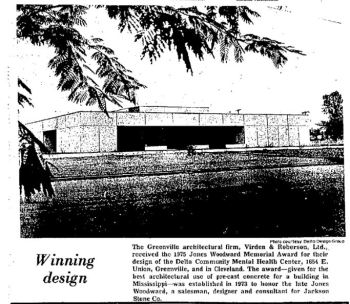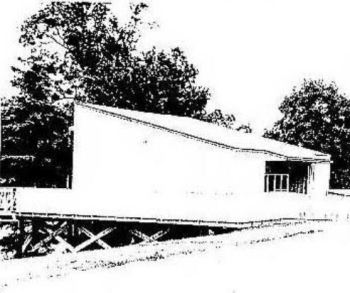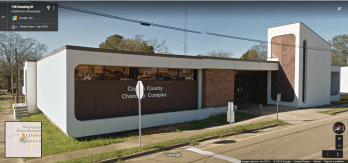While searching newspaper archives for architecture awards from between 1965-1978 for our Mississippi’s Best Buildings series, I ran across an award to a student from Columbia, Mississippi who, in 1966, was studying at LSU.
Architecture Award — Elaine Virginia Carbrey, daughter of Mr. and Mrs. Austin Carbrey, 608 Keys Avenue, received the M. N. Davidson Award as the outstanding sophomore student in architecture at an awards dinner of the Baton Rouge chapter of American Institute of Architects. The $500 award was presented by O. J. Baker, head of the department of Architecture at Louisiana State University.
The Columbian-Progress May 19, 1966
I was curious what the M. N. Davidson Award was, and thankfully a Texas A&M web page gave some insight.
M.N. Davidson Foundation Scholarship
Awarded to a student in the Department of Architecture who has completed at least two years in the undergraduate program. Recipients shall demonstrate promise of professional potential.Established by the M.N. Davidson Foundation with monies from Davidson Sash and Door companies throughout Texas and Louisiana. The M.N. Davidson Foundation was established to honor Moses Nathan Davidson as a graduation gift to Simon D. Davidson in 1948.
https://www.arch.tamu.edu/undergraduate/scholarships/scholarship/90/
Hindsight being 20/20, Ms. Carbrey was a spot on recipient for the award. A Texas Tech webpage titled WOMEN IN ARCHITECTURE offers up this brief portrait.
Elaine Carbrey, AIA. Elaine Carbrey earned her B.Arch. at Louisiana State University, her professional affiliations include the AIA and the AICP. She is Vice President and Head of the Planning Department of Gruen Associates in Los Angeles, involved with planning communities in several states and in foreign countries such as Antigua and Indonesia. Ms. Carbrey has participated as Project Manager or Principal Planner in many city and regional planning projects, including: The Westwood Village Specific Plan and Environmental Impact Reports, Los Angeles; The Central Phoenix Development Plan, designed to assist the city in realizing its potential as a major urban center in the Southwest and to provide an overall framework to guide public and private investments; Waterwood, a balanced, water oriented new town in east-central Texas which will contain public marinas, a yacht club, luxury resort hotels, lakefront and golf course condominiums, a marina village with restaurants, entertainment and specialty shops, plus complete community facilities and services in the areas of health, education, commerce, and recreation to accommodate an ultimate planned population of 25,000.
What was best in the Sixties and Seventies?
Categories: Architectural Research, Columbia







I presume that anyone interested architecture knows the name Victor Gruen. I didn’t, that is, until I read this article about Elaine Carbrey. What an interesting story he is. Known as the father of the “shopping mall”, he designed the first in America outside Detroit, as well as later iterations in Minnesota and other cities. He grew to hate them. In 1956 he planned a city center for Ft. Worth that was devoid of automobile traffic that was only partially implemented, but the results are still evident. He eventually moved back to Vienna and died in 1980.
LikeLiked by 1 person
Interesting connection to Gruen. I’m up in MSP now but hail from MS and there is a mall up here, called Southdale Center, which Gruen designed and is oldest mall in America today and also boast as being the first built with the mall concept of enclosed climate controlled environment, a real plus in February’s -20 temperatures. Guen was a socialist who eschewed the individual shops in a downtown setting, which he saw as being too individualistic and not efficient enough. He thought the mall would serve as community center, his original idea for Southdale was to have it surrounded by planned urban housing and together with the mall would make up a collective type community that did not need cars. The housing part was never built and the mall proved so popular that it was replicated ad nauseum across the country. The mall became the bastion of consumer oriented capitalism in the late 20th century and funny enough now, the socialist types are anti-mall and look to revive the small shop aspects commercial retail. It’s sort of odd how things seem to come full circle if you give it enough time.
LikeLiked by 1 person